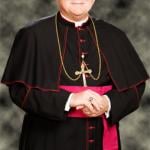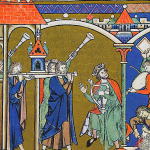Washington D.C., Mar 27, 2015 / 04:04 am (CNA/EWTN News).- Firing squads, gas chambers and the electric chair – these types of execution may seem like methods of the past, but some states in the U.S. are bringing them back, prompting a debate about the most humane form of the death penalty, or whether the very idea is a contradiction in terms. “I think we’re at a critical point right now where the myth that lethal injection was swift, effective and painless has been destroyed,” said Robert Dunham, director of the Death Penalty Information Center. “And there’s kind of an irony here, because lethal injection was the choice when states were moving away from other more extreme, more overtly violent forms of execution.” On Monday, Utah Gov. Gary R. Herbert (R) signed a bill to legalize a five-person firing squad as the official back-up method of execution for the state, should it be unable to obtain the three drugs necessary for lethal injection. Utah is not alone in rethinking its death penalty. Recent botched executions in states including Ohio, Oklahoma and Arizona, coupled with a shortage of the necessary drugs have several other states reconsidering the lethal injection method as well. Alabama is looking to revive the electric chair, which became the back-up method of execution in Tennessee last year. In four states – Wyoming, Arizona, California, and Missouri – gas chambers are the legal back-up method of execution after lethal injection. And in New Hampshire and Washington, hanging is a legal option. The shift to more violent means of execution in some states is forcing society to confront the uncomfortable reality of the death penalty, Dunham told CNA. “Here’s the bottom line: executions are by their very nature a violent act,” he said. “When you are terminating the life of a person against their will, that’s a violent act, and people are uncomfortable with sanctioning violence.” “They were less uncomfortable with lethal injection when it had the appearance of being peaceful. That is no longer tenable.” Rep. Paul Ray (R), who sponsored the firing squad legislation in Utah, told the Los Angeles Times that he was aware of complaints about the firing squad being less humane. “We could argue all day about what is more humane,” he said. “I think any time you have to take a human life, there may be a way to dress it up and make it look nice, but my concern is make sure that there is justice for the victim.” But while some states are arguing over which methods of execution are most humane, others are looking at moving away from the death penalty altogether. The death penalty has been trending down in the country for some time. There are 26 U.S. states and jurisdictions with no executions carried out in at least 10 years. Just last year, the country executed 35 inmates, a two-decade low. Fewer states carried out executions and there were fewer people sentenced to death in the first place, according to the Death Penalty Information Center’s 2014 end of the year report. Some of the shift away from capital punishment has been the result of botched executions. Last year, inmates in at least three different states were observed gasping for breath, choking, convulsing, and clenching their fists. In one case, an inmate took nearly two hours to die. In another, an inmate died of a massive heart attack half an hour being administered the lethal drugs. Lethal injection is generally performed using a three-drug cocktail. The first drug is an anesthetic, the second is a paralytic, and the third is the killing agent. The paralytic, Dunham said, is not present for any medical purpose, but rather to give the appearance of a peaceful passing, regardless of what may be going on interiorly in the person. But when some of all of the drugs fail in some way, it shatters the illusion of a non-violent death. “These latest botched executions have destroyed the myth that lethal injection is peaceful; and lethal injection was preferred because it was less disturbing to the public,” he said. Further driving states away from lethal injection is the inaccessibility of the lethal drugs. Dunham said many pharmaceutical companies do not want to be associated with the taking of life, and have therefore stopped providing the lethal drugs. This causes states to look for companies abroad, but since the European Union holds the death penalty as a violation of human rights, it is illegal for European pharmaceutical companies to sell the drugs to the United States. Some states obtain the drugs through what are known as compounding pharmacies, which are less regulated. Dunham voiced concern over the lack of quality assurance with these pharmacies, adding that they have been known to distribute contaminated drugs in the past. Furthermore, many doctors refuse to participate in executions, as they violate the Hippocratic Oath. This means whoever is administering the lethal injections may have sub-par medical training. Combine this with the questionable drugs, and the margin for error and botched executions is pretty significant, Dunham said. Given all of these problems, many states are struggling with what to do next. Three states – Florida, Ohio and Pennsylvania – have already put a temporary halt to the death penalty. And while state returning to firing squads and electric chairs make good headlines, there are at least 13 states where bills have been introduced to abolish the punishment altogether. Bishop John C. Wester of Salt Lake City, Utah, expressed his dismay at his state’s return to the firing squad in a statement released Tuesday, March 24. The real issue, he said, is not the method of killing but the death penalty itself. “Only God can give and take life,” he said. “By taking a life, in whatever form the death penalty is carried out, the state is usurping the role of God. Execution does violence to God’s time, eliminating the opportunity for God’s redemptive and forgiving grace to work in the life of a prisoner.” Bishop Wester encouraged Utah’s governor and legislature to pass a moratorium on the death penalty, and to look at moving away from the “state-sanctioned destruction of human life” altogether before the next execution occurs. Pope Francis has also addressed the issue of the death penalty on several occasions, most recently in a letter last week to Federico Mayor, president of the International Commission against the Death Penalty. “There is discussion in some quarters about the method of killing, as if it were possible to find ways of 'getting it right'…But there is no humane way of killing another person,” the Pope said, emphasizing, “Nowadays the death penalty is inadmissible, no matter how serious the crime committed.” Under Catholic teaching, the death penalty is a matter of prudential judgement, but the Catechism of the Catholic Church offers guidance in how to think about its application. The Catechism teaches that the death penalty is acceptable “if this is the only possible way of effectively defending human lives against the unjust aggressor.” However, it adds, such cases today “are very rare, if not practically nonexistent,” wording that was added from Pope John Paul II’s encyclical, Evangelium vitae. Anthony Granado, who serves as a policy advisor for the U.S. Conference of Catholic Bishops’ domestic social development office, told CNA he believes that United States definitely falls under the category of countries in which the death penalty should be “practically nonexistent.” “The issue about violent criminals killing prison guards or other prisoners is not an argument for further use of the death penalty, but for reforming prisons,” he said, “and the bishops here in the United States are very much in favor of criminal justice reform.” The Church does not teach against life in prison without parole, Granado noted, but these cases should be decided very carefully and on an individual basis. Dunham agreed that the death penalty is generally speaking not necessary in to protect the public in the U.S. He pointed to studies indicating that a country is no safer when the death penalty is in place. “We’re not dealing with the Wild West and whether a dangerous criminal can be safely held in a small-town sheriff’s lock-up,” he said, “we’re dealing with super maxes.” Part of the problem, Dunham argued, is that most people in the United States have not thought seriously about the death penalty. Europeans, who experienced more immediately the horrors of World War II, were quicker to abolish the death penalty because taking life had become “unpalatable,” he said. Once people become more informed, they tend to favor abolition of the death penalty, Dunham said. “I think as each of these different issues comes to light, the public becomes more informed. And as the public becomes more informed, its views change. And its views have been changing consistently in the same direction.” The issue may soon take the national stage, as U.S. Supreme Court hears arguments next months in Glossip vs. Gross, a botched execution case out of Oklahoma. The court is expected to rule later this year whether lethal injection amounts to cruel and unusual punishment. Read more















